‘Wonders of the Orient’ spans the centuries, bringing together a collection of Chinese, Japanese, Korean ceramics, paintings and works of art from as early as the 11th century B.C. to the 21st century, each of which demonstrates exceptional artistic skill in diverse materials such as lacquer, porcelain, early stoneware and earthenware, root-wood and glass.
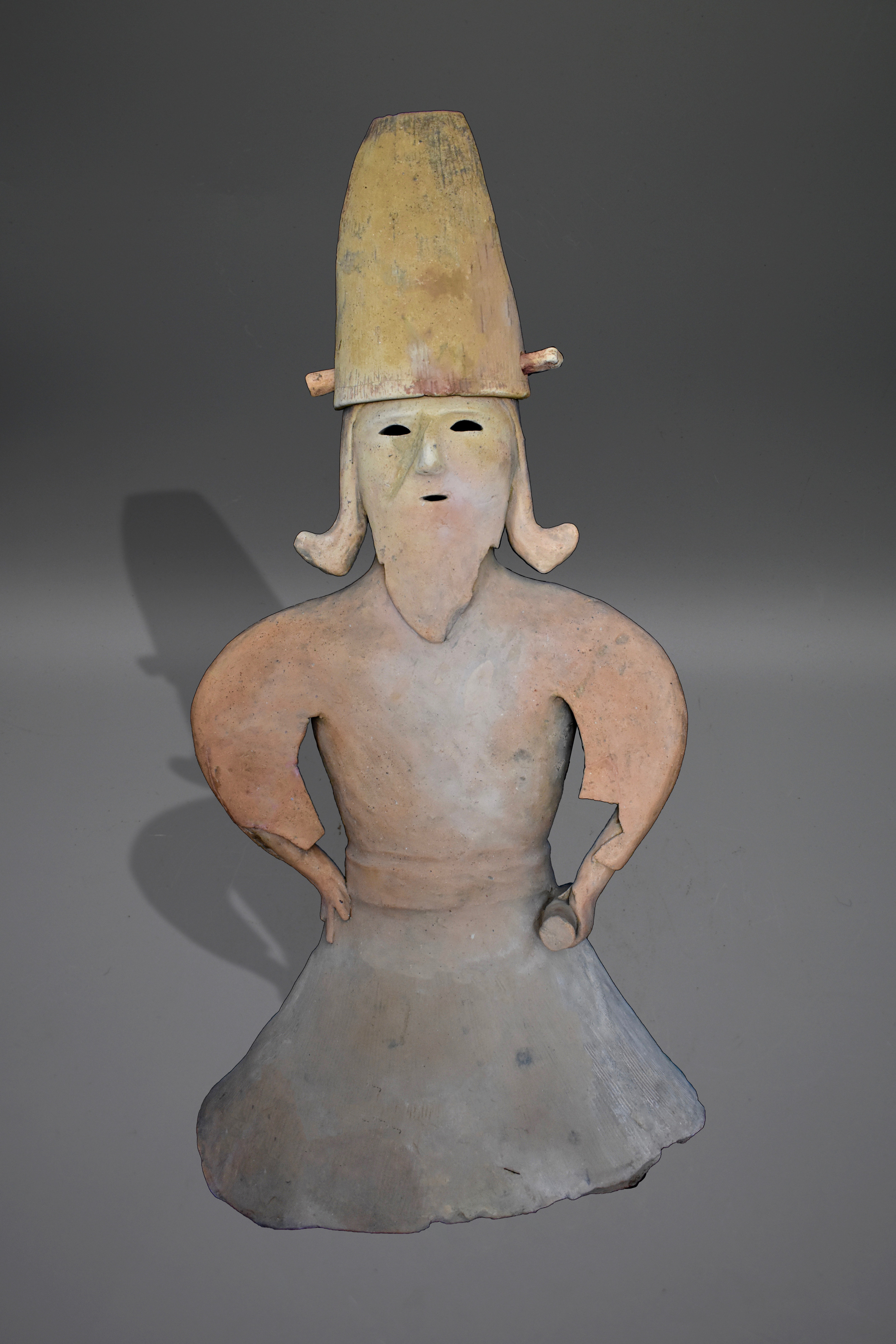
An Extremely Rare ‘Haniwa’ Figure Of A Court Official.
Kofun Period: 5th century
Earthenware
Japan
H: 86cm x 46cm 26cm.
Haniwa or ‘planted rings’ date from the Kofun period (250AD-538AD). The earliest Haniwa examples are simple clay cylinders and were originally functioned to secure the contours of the burial mounds. By the 4th century AD tombs had haniwa in multiple forms including animals, tools and houses. Figural Haniwa were created in the 5th-6th centuries.
The present male haniwa figure very likely represents a bearded Court official sporting an elongated detachable hat and holding a scroll in his left hand, vividly attests to the world of early Japan. Sturdily potted from earthenware, his wide face, triangular nose, crescent shaped eyes and oval mouth evoke an impassive resolve.
A similar Haniwa but of a Chieftan holding a sword and crown is in the British Museum, London. Museum number: 2003,0319.3.
Another example but of a warrior is in the Musee Guimet, Paris.
There seems to be no other example of this figure in Museums or in Private Collections.
The result of the Oxford Authentication Ltd. Thermoluminescence test no. N118b45 is consistent with the dating of this Haniwa figure.
Provenance:
Private Japanese Collection.
Excavated in the Southern part of the Ibaraki Prefecture.
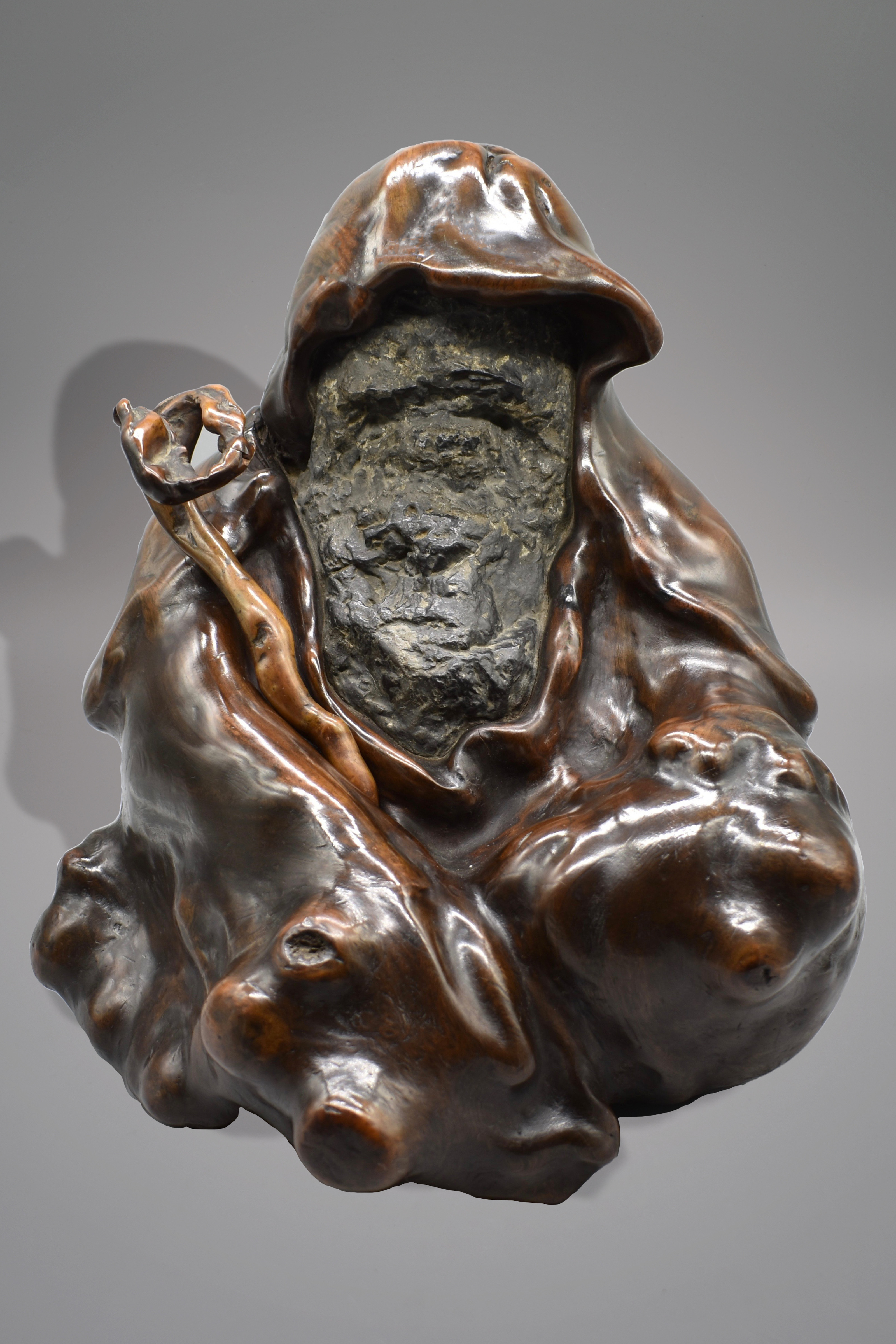
An Extremely Powerful and Unique Boxwood Root Sculpture Of Daruma
18th century
Root wood and stone
Japan/China
H: 30cm W: 30cm
The undulating knobby surface is modelled resembling a seated figure of Daruma or Bodhidharma wearing a high cowl framing his face, his long robe drapes around his shoulder and knees. The rich caramel-brown wood grows around a stone which forms the face and chest. Bodhidharma was a Buddhist monk, possibly from Central Asia or India, in the 5th-6th century who is believed to be the first transmitter of Chan Buddhism to China.
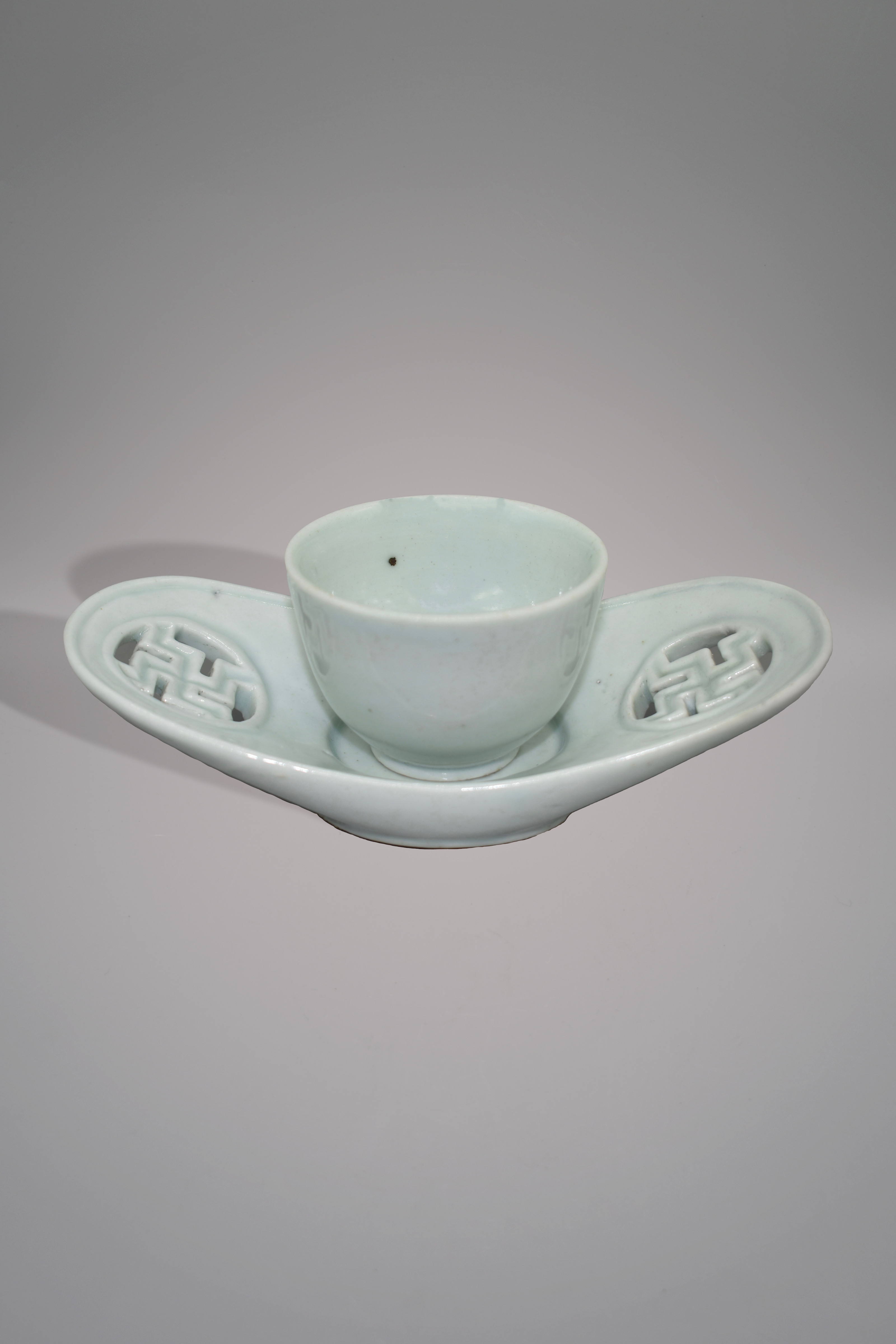
A Fine and Rare Ritual Cup And Saucer
Choson Dynasty- 18th century
Porcelain
Korea
H: 5.5cm W: 16.5cm.
An elegant sake cup and stand. The cup, simple in form with deep sides rising from a delicate foot-rim, the stand with open work designs of the Buddhist Swastica Emblem. Glazed all over in a white glaze with a slight blue hue.
A closely related example is illustrated in Treasures from Korea - Arts and Culture of the Joseon Dynasty Korea - 1392 - 1910 by Hongkyung Kim and Rose Lee, number 3-14, pg. 89.
Provenance:
Old Japanese Collection.
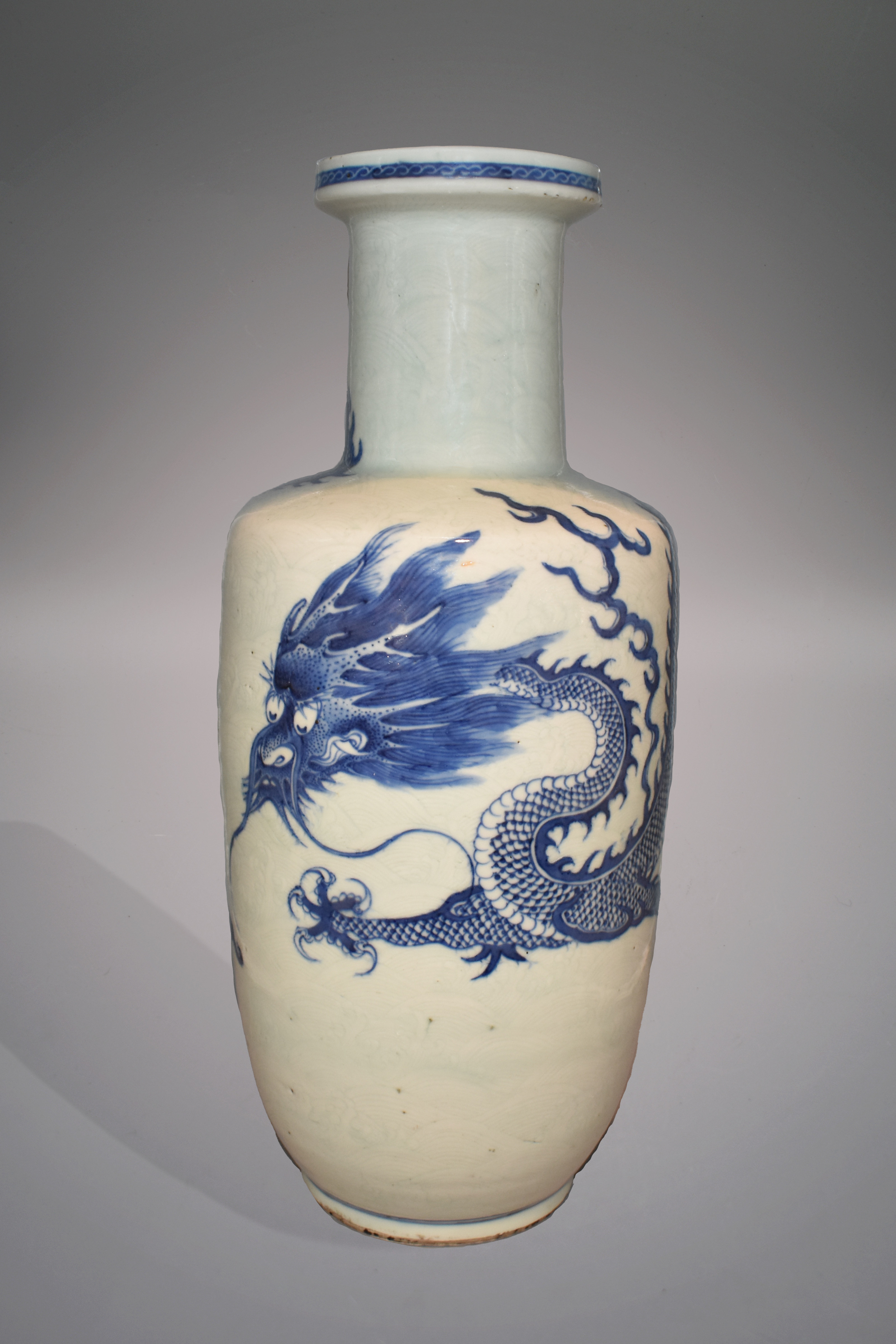
A fine and rare blue and white Rouleau Dragon vase
Qing Dynasty 18th century.
Porcelain
Jingdezhen, Jiangxi Province, China.
H: 44cm D: 21cm
Exterior painted with a fierce five-claw dragon spiralling around the wide rouleau vase and chasing flaming pearls, decorated in underglaze cobalt blue. The dragon is painted on an 'anhua' or 'secret decoration' incised ground of waves and clouds, only visible upon a closer inspection. Double concentric cobalt blue rings to the base.
Provenance:
Deaccessioned from the Royal Ontario Museum in 1969
Formerly in the George Crofts Collection
Private Canadian Collection
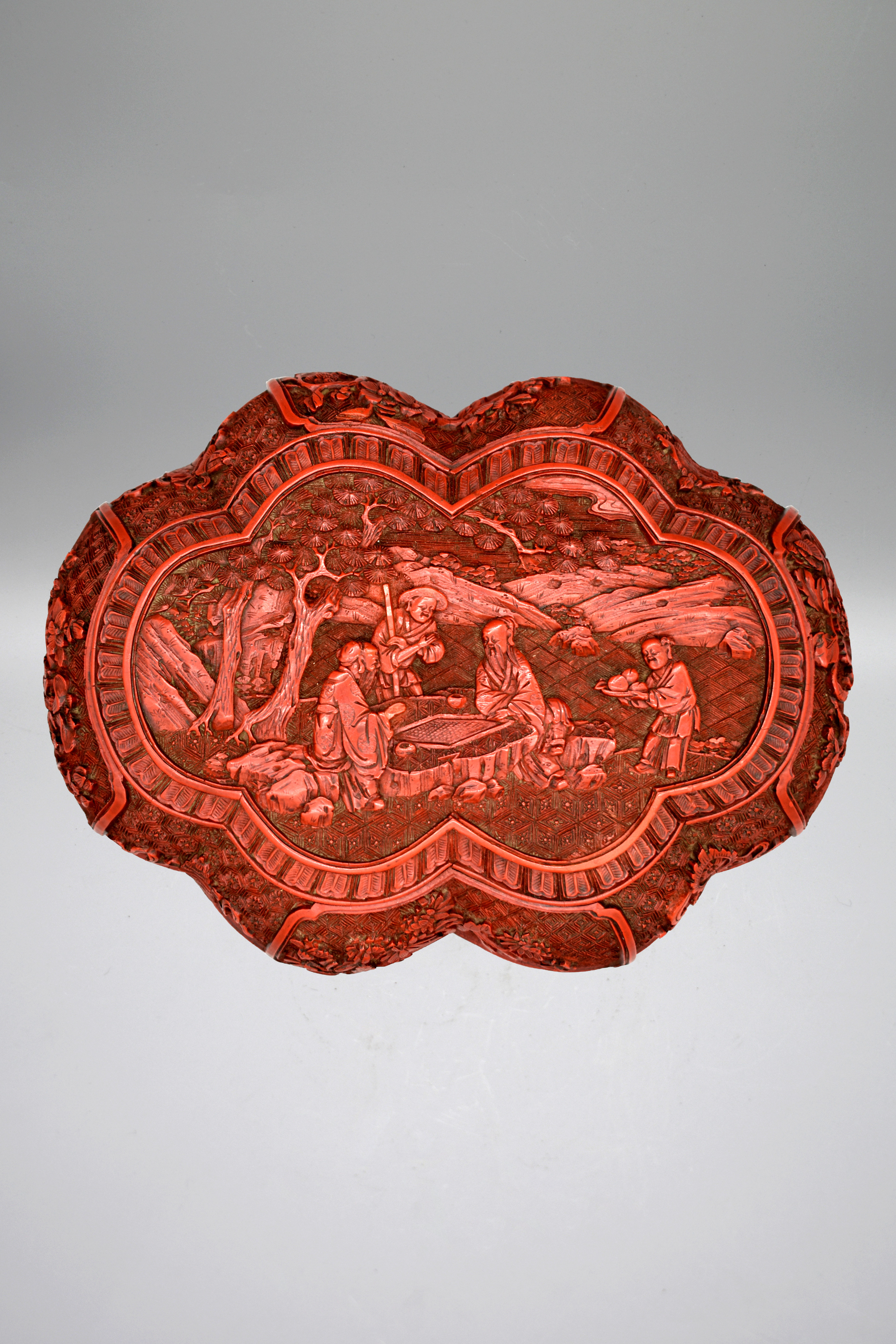
A Chinese Cinnabar Lacquer Hexalobed Box and Cover
Qing Dynasty: 18th century
Lacquer, wooden core
China
W: 17.5cm
Finely carved to the cover with a cartouche depicting two scholars engaged in a game of wei qi with two attendants approaching, beneath a pine tree, the sides carved with alternating panels depicting blossoming foliage and the Bajixiang, ‘Eight Buddhist Emblems’, lacquered black to the interior and base.
Provenance:
Provenance: Spink & Son paper label to base C.f. Lot 170
The Pavilion Sale - Chinese Ceramics and Works of Art, Christie’s Hong Kong, 5th April, 2016
Private English Collection
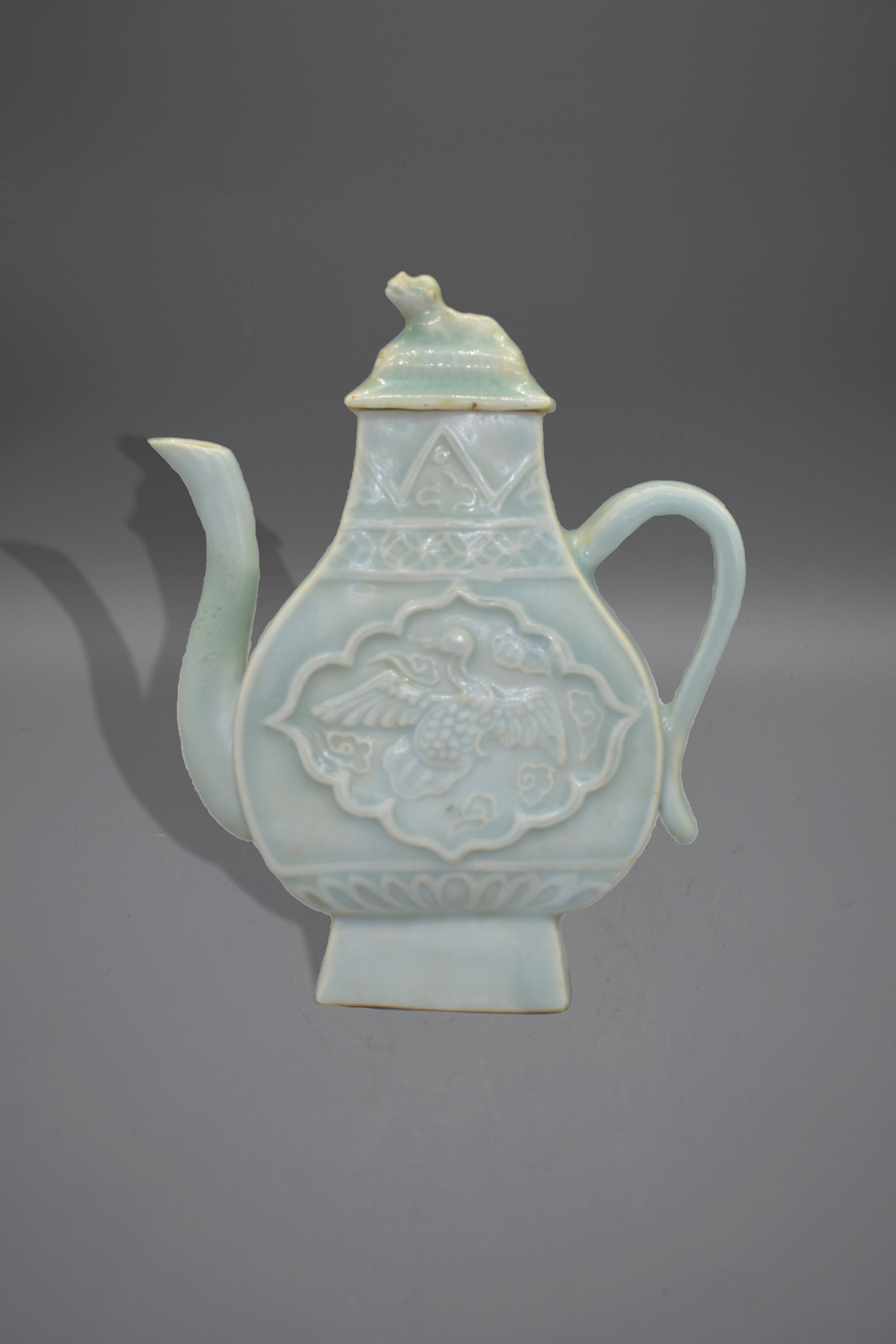
A fine and rare Qingbai ewer
Yuan Dynasty (1279 – 1368).
High-fired Stoneware.
Qingbai Kilns, Jingdezhen, Jiangxi Province, China.
H: 15cm D:12cm
Finely potted rising from a high rectangular footrim supporting an aubergine shaped body flanked with a curved spout and a handle, topped with a seated shi-shi dog lid, covered all over in a lustrous light blue glaze, the footrim is unglazed exposing the burnt reddish brown coloured body. The ewer is decorated on each side with moulded designs depicting a flying phoenix and a blossoming lotus flower, both within a diamond foliate panel.
A Qingbai ewer with a moulded design was sold in Sothebys, New York, 2018.
Provenance:
Carl Kempe Collection Number 555
Ulricehamn East Asian Museum Collection Number 761.
Published in ‘Kinesiska Keramiska Masterverk’, ‘Chinese Ceramic Treasure’ by Ulricehamn Museum, Sweden, 2002, pg. 231.
